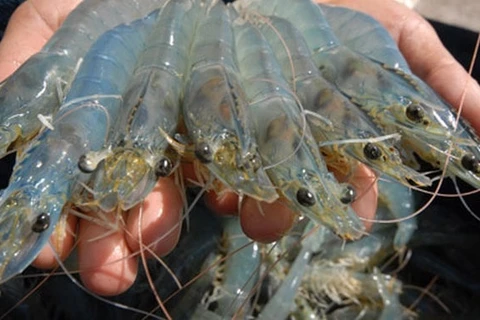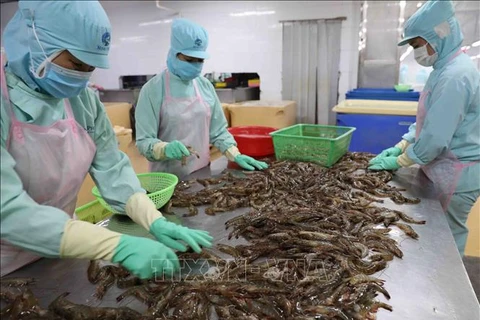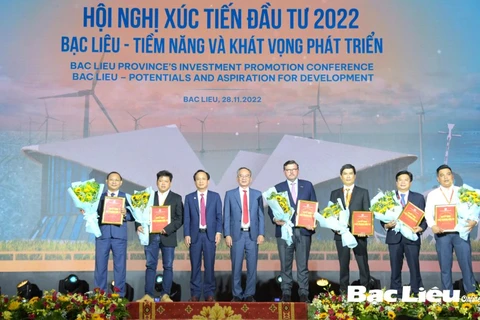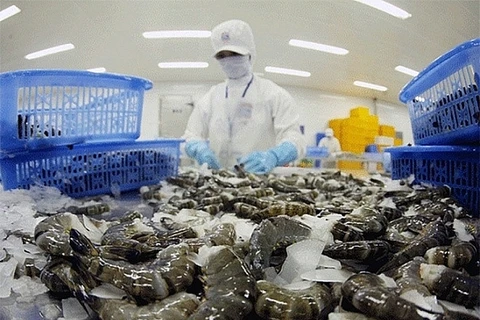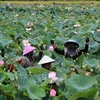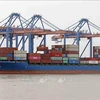Ben Tre (VNA) – The southern province of Ben Tre has set a target to have 36,000 ha of brackish shrimp farming by 2025 and gain about 1.2 billion USD from shrimp exports.
The targets are set in the province’s shrimp industry development plan for the 2021-2030 period with a vision to 2050 which was approved on December 23.
Of the total brackish shrimp farming area, 4,000 ha is for hi-tech shrimp farming, 8,500 ha for intensive/semi-intensive farming, more than 15,800 ha for extensive farming, nearly 2,650 ha for forestry-shrimp farming, over 5,000 ha for shrimp-rice farming, and 1,900 ha for intercropped giant freshwater shrimp farming.
The province expects shrimp production will reach 190,280 tonnes by 2025.
The province plans to expand the brackish shrimp farming area to 36,000 ha by 2030 and shrimp production of 251,980 tonnes. It expects shrimp export turnover will reach 1.8 billion USD.
Especially, with a vision to 2050, the province's shrimp industry is expected to develop sustainably, with high productivity, high quality, and a prestigious brand in the domestic and foreign markets.
To realise the plan, the province will focus on re-organising production, further developing forms of cooperation and production linkages.
The locality will also develop value chains from fries production, and commercial farming to the consumption market, in which purchasing, processing, and consumption enterprises play a key role in forming the chains.
The province will speed up projects on two shrimp processing factories in Thanh Phu district and call on investors to build large-scale shrimp processing plants in Phu Thuan industrial park.
Deputy Director of the Department of Agriculture and Rural Development Nguyen Van Buoi said that between 2016 and 2021, although the province's shrimp farming area is quite stable, increasing by only 0.2% per year from 35,000 ha in 2016 to 35,300 ha in 2021, the output increased by an average of 11.9 % yearly from 46,278 tonnes to 81,200 tonnes.
He said that the province's shrimp industry strongly shifted from extensive farming to intensive breeding, especially high-tech white-legged shrimp farming in an area of nearly 2,600 ha./.

